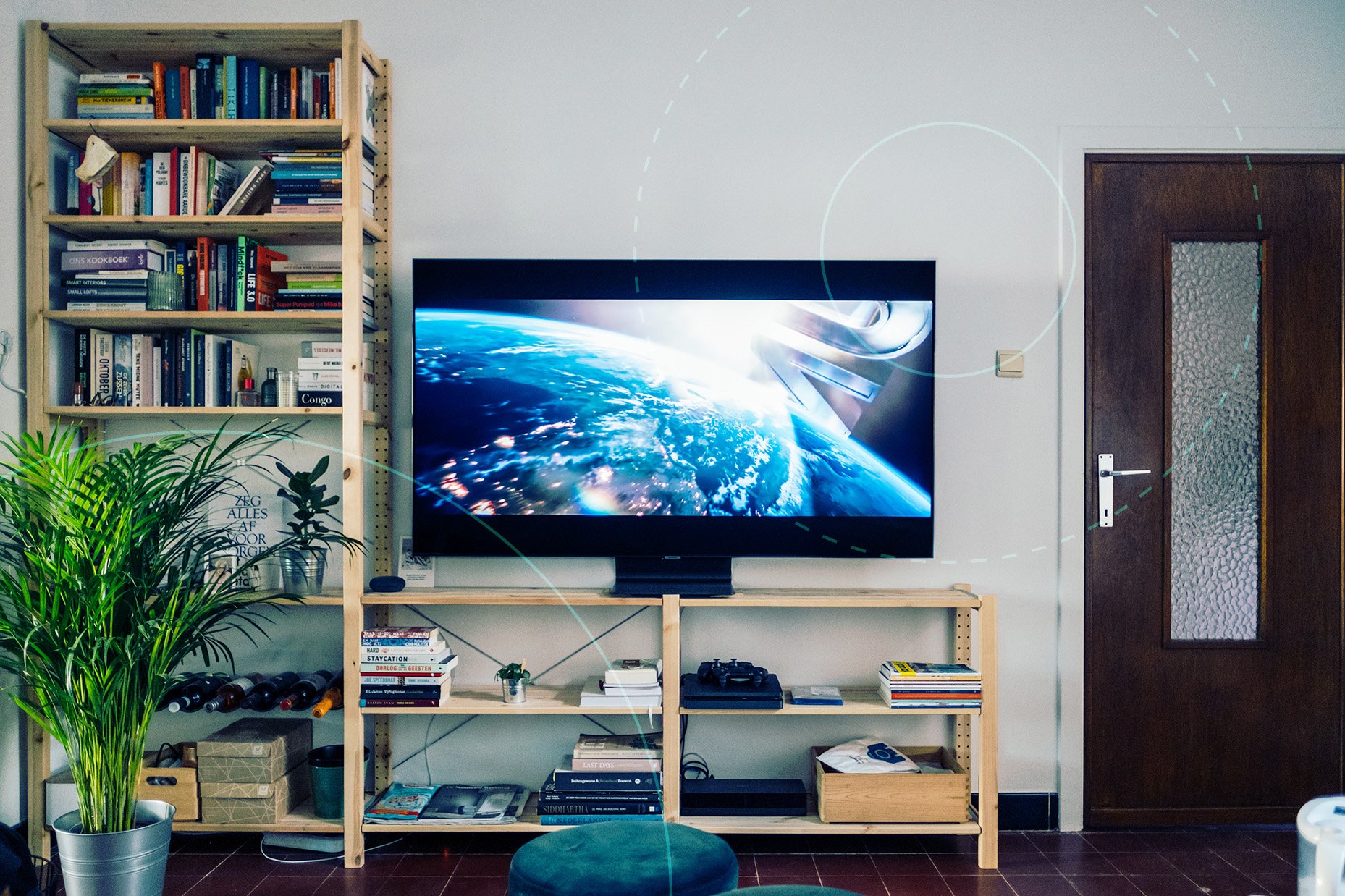Given the cost of local television ad rates, sometimes the best strategy is to find savings at the production level.
Given the cost of local television ad rates, sometimes the best strategy is to find savings at the production level
From understanding pricing factors to optimizing your ad budget, it's pivotal to have insight into the intricacies of TV advertising costs. Whether you're a business aiming for local exposure or a marketer seeking effective outreach, the nuances of local television ad rates help you make informed decisions that maximize the impact of your advertising investment.
Dig deeper with The Marketer's Guide to Linear TV Advertising in 2024.
How Much Does a TV Commercial Cost?
The cost of producing an ad for TV can vary widely depending on several factors. First, the complexity of the ad informs the overall cost, whether you’re telling a high-concept narrative or simply filming a product demonstration. Creative elements such as scriptwriting, casting, location scouting, and special effects also contribute to the cost. The production process, including shooting, editing, and post-production, will factor in.
Once the ad is complete, there are still broadcasting expenses to take into account. These can vary based on location, TV channel, broadcasting time, and projected viewership. Prime time slots on popular channels will typically command higher prices, while less sought-after time slots may be more affordable. Additionally, certain channels or programs may have higher or lower advertising rates based on their viewership demographics. It's important to carefully consider these factors when determining the cost of a TV commercial.
So what is the average cost of advertising on TV? After accounting for various factors, airing 30-second television ads cost producers over $100K in the United States. Local television ad rates can vary from $5 to $100 for every 1000 viewers. Knowing when to pay for a high-quality production or optimize your broadcasting expenses makes all the difference in driving a positive return on investment.
Budgeting Your TV Commercial Production Cost
Producing a commercial can be an expensive venture, as it requires various components such as pre-production planning, filming, editing, and distribution. Understanding the breakdown of each TV commercial production cost and expense makes it easier to budget productions. Let's take a closer look at the key elements that contribute to the average cost of TV advertising.
Pre-production
Pre-production for video involves several key tasks and considerations. First, script development is essential, as it forms the foundation for the entire project. This may include creating a storyline, dialogue, or visual concepts. You will also determine a shooting location during this stage, whether it is within a studio or filmed on location. Budget allocation for each element helps determine how resources will be distributed throughout the production process. Hiring talent, such as actors, crew members, and potentially union personnel, can significantly impact the budget for TV commercial shoots, as their fees and agreements must be factored into the overall costs.
Production
Efficient time management is essential during the video shoot to maximize the output. This includes sticking to the schedule, following a precise storyboard, using time-saving techniques, and making quick decisions when necessary.
Resource utilization plays a significant role in efficiently leveraging equipment, props, and talent. For example, filming multiple commercials with the same actors and production crews squeezes more ad content from each shoot. Maximizing the use of these resources can be a significant cost-saver that still improves the overall quality of the production.
Post-production
Modern post-production techniques play a critical role in refining and enhancing the raw footage to create a compelling and professional end product. As with previous steps, using post-production time and resources efficiently can maximize the output of finished commercials at a reduced cost.
Picture editing is crucial for piecing together the footage to create a cohesive storyline, while sound editing enhances the auditory experience. Special effects and motion graphics add visual interest and polish to the final product and music selection sets the mood and tone. Each step should be planned and budgeted during the pre-production stage so post-production crews know exactly what to expect.
Local TV Advertising vs. Connected TV Geotargeting
Local TV advertising is a traditional approach that targets broad geographic regions and general demographics. In contrast, Connected TV (CTV) geotargeting opens the door for precise audience targeting based on zip code, demographics, and the personal interests of viewers. Key benefits of CTV geotargeting include higher engagement rates, better ROI, and increased brand awareness. According to recent statistics, CTV geotargeting can help optimize the average cost of a TV commercial while driving a 39% increase in ad recall and a 34% lift of all other channels.
CTV Advertising Rates
CTV advertising rates can be categorized into cost per thousand impressions (CPM), fixed ad rates, and dynamic ad insertion rates. CPM is the cost an advertiser pays for one thousand views of their ad, fixed ad rates are pre-determined prices for ad placement, and dynamic ad insertion rates vary based on factors such as audience demographics, time of day, and content genre.
CTV advertising rates are determined based on the specific audience demographics, the time of day the ad will run, and the genre of content it will be placed within. High-demand demographics, prime time slots, and popular content genres typically command higher rates due to the potential for increased reach and engagement.
Negotiating competitive CTV advertising rates involves research, understanding the target audience, and effectively communicating the value the ad will bring to the platform. Securing competitive rates also involves exploring different packages and options, understanding the specific requirements of the platform, and being prepared to negotiate terms such as reach, frequency, and placement. By closely examining the factors that influence CTV advertising rates, advertisers can secure competitive pricing and maximize the impact of their campaigns.
Make tvScientific Your CTV Partner
tvScientific was co-founded by senior executives with deep roots in search, programmatic advertising, digital media, and ad verification. We think scientifically, and our results are driven by a belief in one, simple formula: Trust = Data x Transparency x Control.
With powerful attribution capabilities, real-time reporting, automated optimization, and built-in, always-on testing, we believe that tvScientific provides the most robust, transparent, tailored CTV advertising platform. Once you see it for yourself, we know you will too. Request a demo today.






